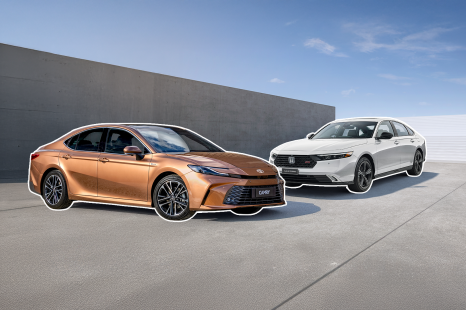

Andrew Maclean
2025 Honda Accord e:HEV RS vs Toyota Camry SL: Spec Battle
3 Months Ago
The new E350 mild-hybrid is a comfortable and luxurious sedan if hamstrung by a high asking price and standard equipment omissions.
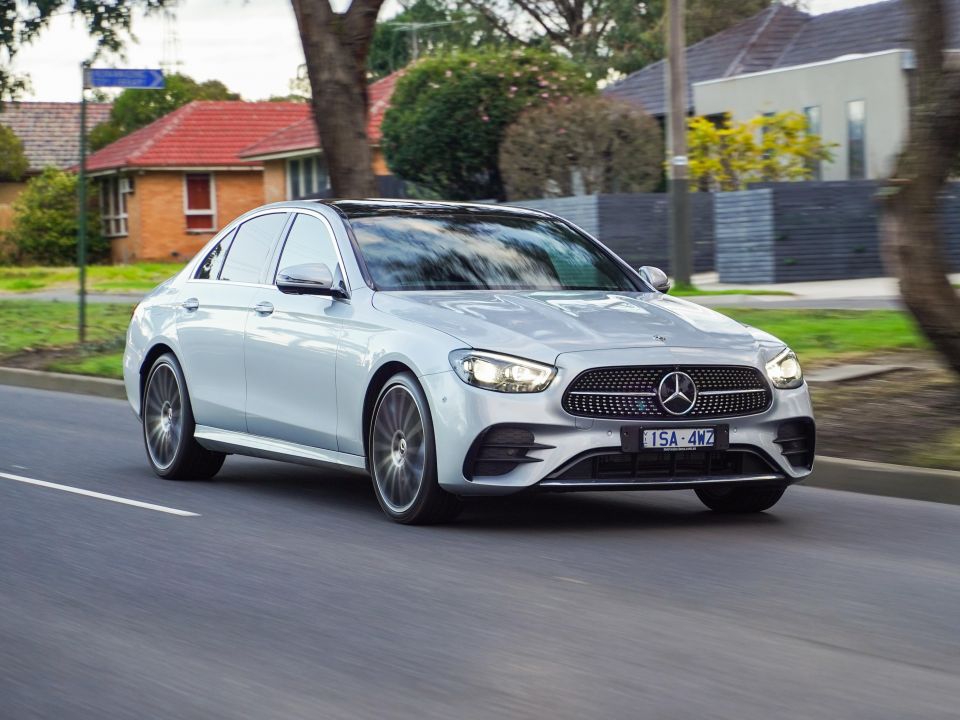
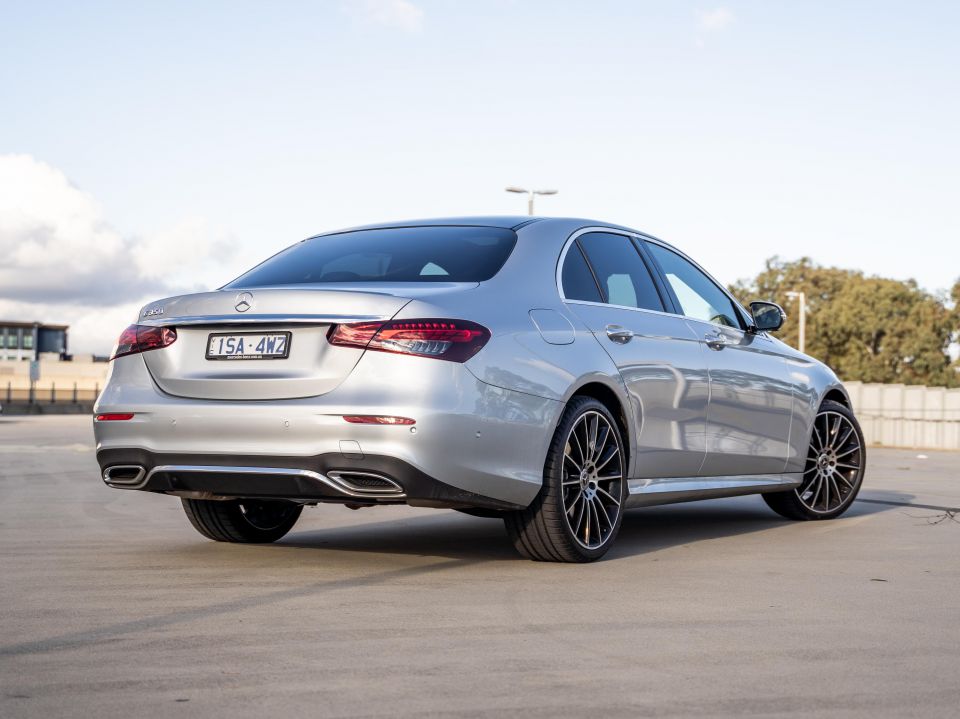

Marketplace Editor
New from
$96,900
excl. on-roads

Marketplace Editor
New from
$96,900
excl. on-roads


Marketplace Editor
New from
$96,900
excl. on-roads

Marketplace Editor
New from
$96,900
excl. on-roads
Quickly see how this car stacks up against its competition. Select any benchmark to see more details.
Where expert car reviews meet expert car buying – CarExpert gives you trusted advice, personalised service and real savings on your next new car.
The Mercedes-Benz E-Class is the marque’s best-selling model series and has lineage dating back to 1946, with over 14 million units delivered since its introduction (according to Mercedes-Benz in 2020).
Described as the “heart of the brand”, the E-Class is something of the people’s flagship, striking a balance between S-Class-style luxury and innovation, and a more C-Class-like price.
Late in 2020 the E-Class range received a mid-life refresh, bringing a revised exterior design, the latest in safety and assistance systems, and the wider electrification of powertrains.
On test we have the 2021 Mercedes-Benz E350 Sedan, the latest variant to arrive in Australia sitting smack bang in the middle of the local line-up.
With a long-running badge synonymous with silky smooth V6 or inline-six petrol engines, is this mild-hybrid four-cylinder E-Class the new pick of the range?

The vehicle we have on test is the recently-arrived 2021 Mercedes-Benz E350 Sedan, which costs $127,100 before on-road costs.
In terms of where it sits in the range, the E350 sits pretty much smack bang in the middle, above the E200 and E300 but beneath the AMG E53 and E63 S.
See the full price list below:
All prices exclude on-road costs

As sales of sedans (and passenger cars in general) continue to decline, the set of competitors for the E-Class has shrunk.
Its BMW 5 Series arch-nemesis is priced closest to the E350 in six-cylinder diesel 530d trim, priced from $125,900 before on-roads. Its inline-six produces less power (195kW v 220kW) but more torque (620Nm v 400Nm) than the Mercedes.
Meanwhile, the Audi A6 55 TFSI quattro S line is more than $10,000 cheaper at $116,000 plus on-roads, and features a more powerful 250kW/500Nm 3.0-litre turbo V6 with 48V mild-hybrid tech.
The Jaguar XF is now only available only in R-Dynamic HSE P300 AWD guise, a relative bargain at $100,200 list with similar 221kW/400Nm outputs from its 2.0-litre turbocharged motor.
Rounding out the competitor list is the Genesis G80. Like the Jaguar, it’s significantly more affordable than the Benz, starting at $99,900 for the flagship twin-turbo V6 3.5T AWD with 279kW and 530Nm – even with the $13,000 Luxury Package, the G80 is some $15,000 cheaper than the E350.
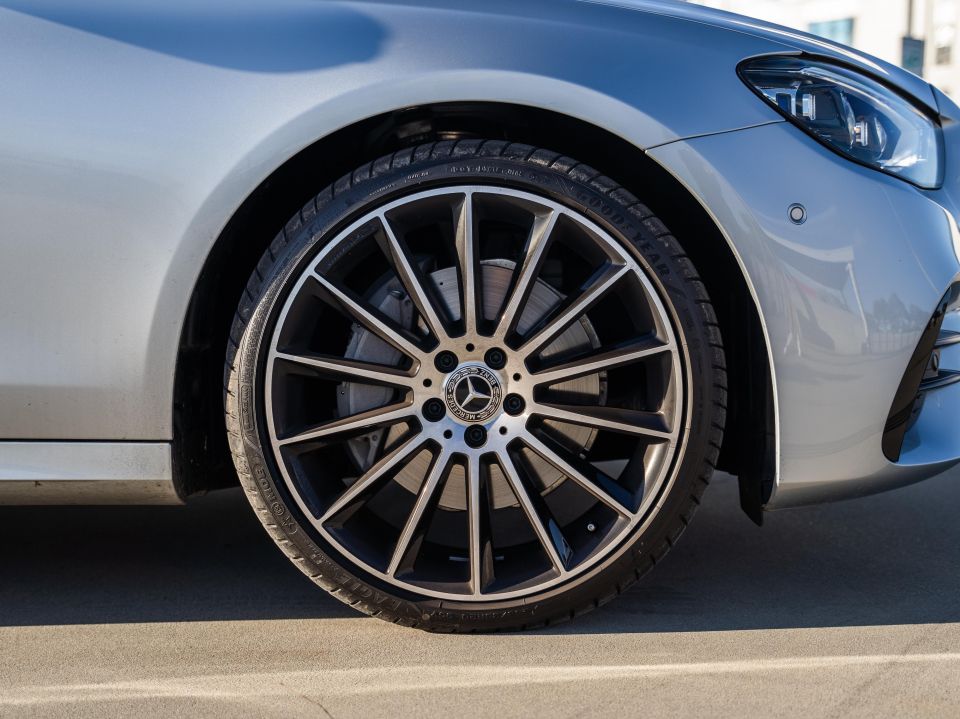
The E350 gets the following standard equipment over lower grades:


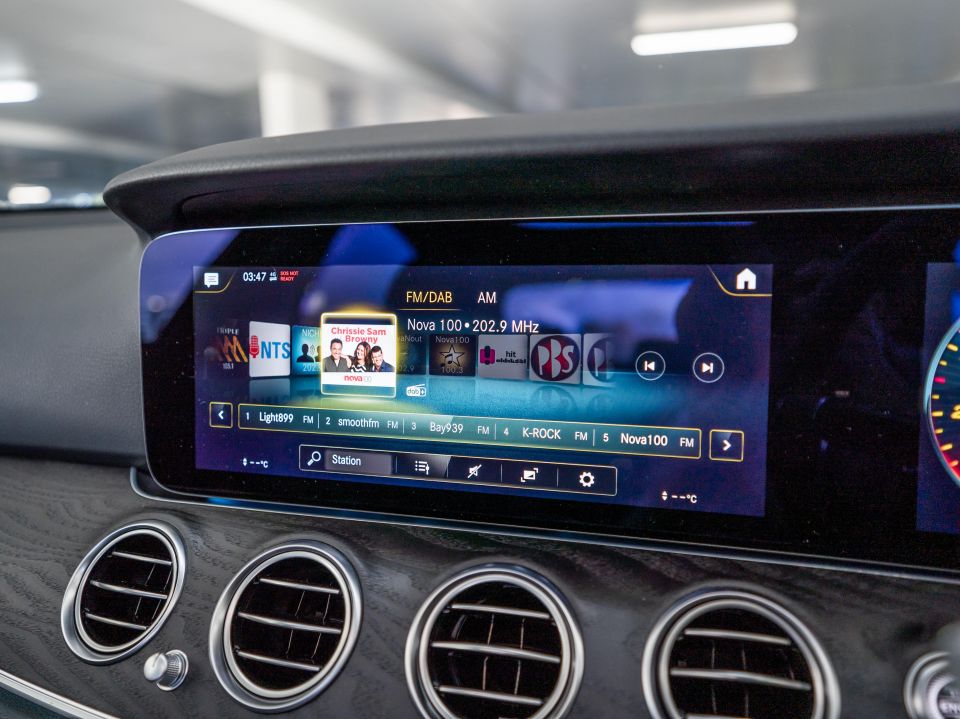
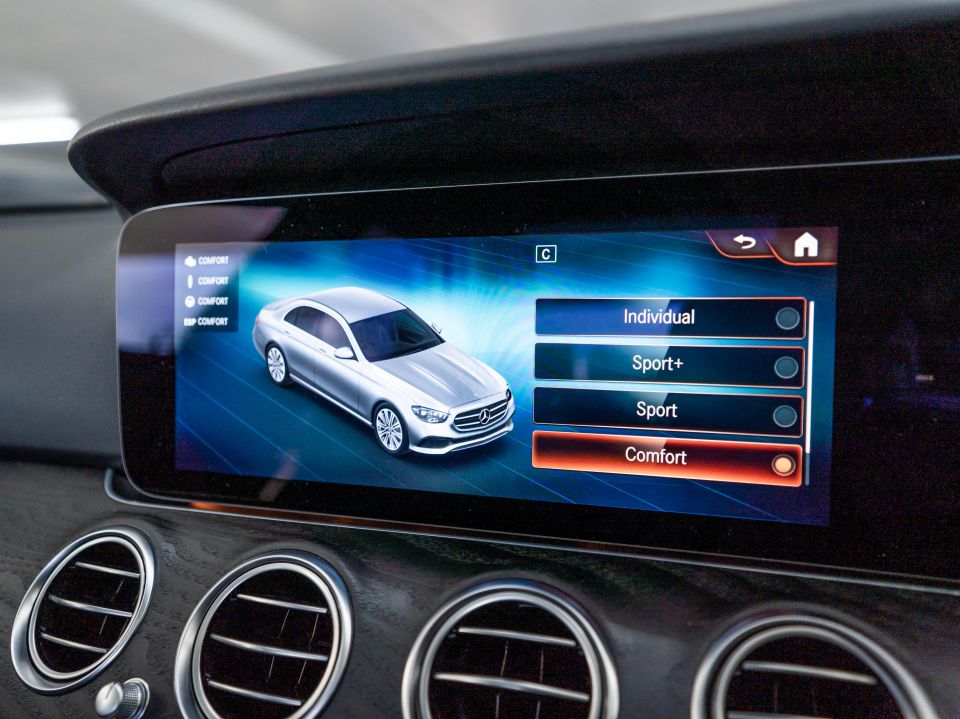
That’s on top of the E200’s base specification, which includes:
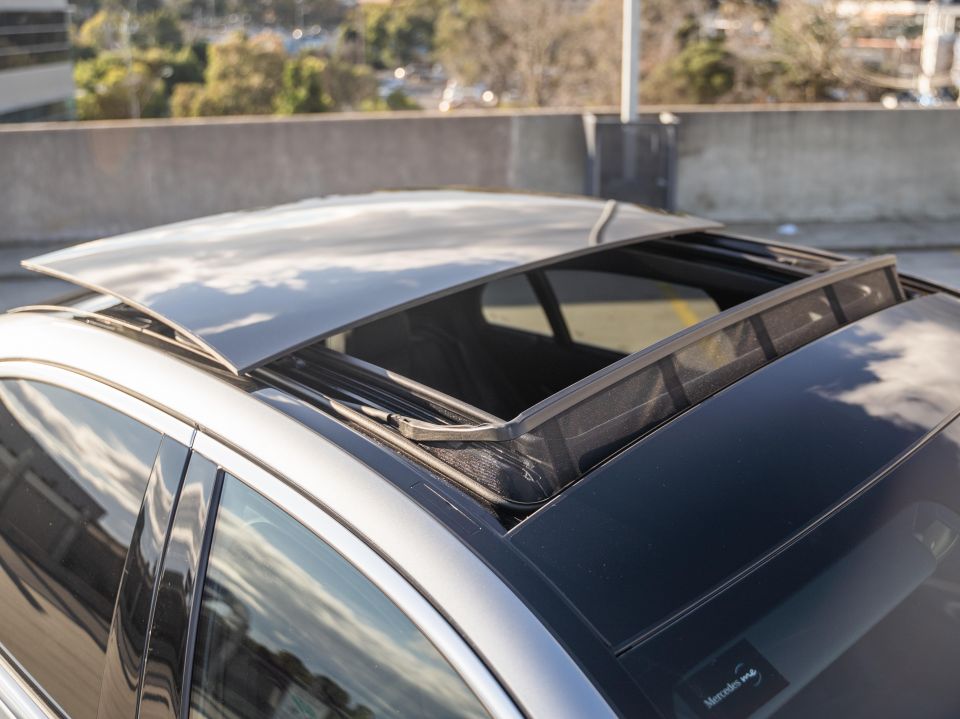
Options fitted to our test vehicle include:
As tested, the vehicle you see here is $134,876 before on-road costs.
Notable omissions include the lack of ventilated front seats or rear climate controls in standard specification, requiring you to tick the $9500 Energizing Package Plus option not fitted to our test vehicle.
The above adds ventilated front seats, Active Multicontour front seats, heated rear outboard seats, a heated front centre armrest, as well as air ionisation and a slew of ‘Energizing Coach’ modes to help you relax on the move.
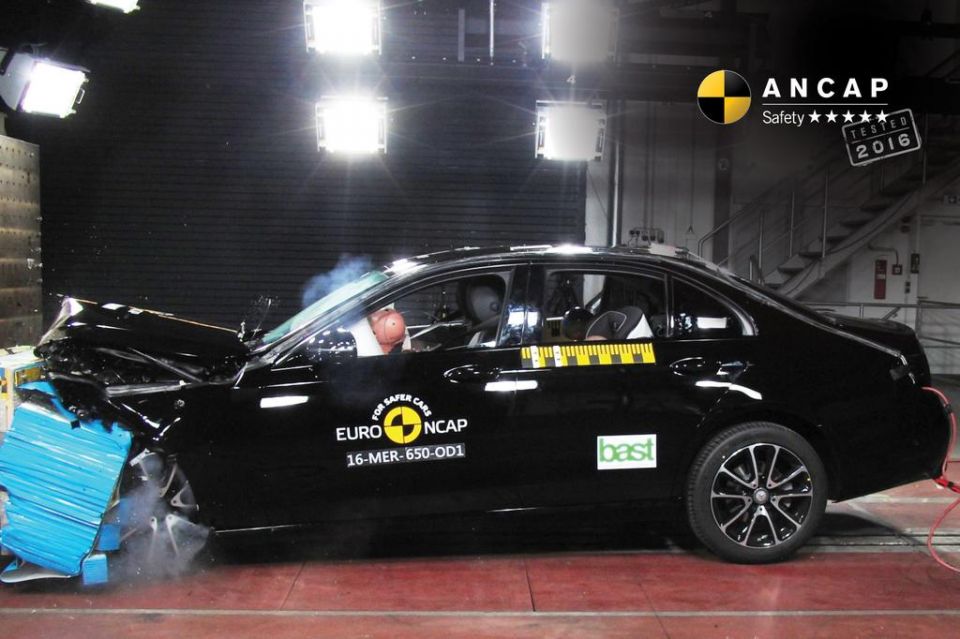
Being a facelift rather than a generational overhaul, the updated E-Class range is expected to carry over the outgoing model’s five-star safety rating, achieved in 2016.
The rating applies to all sedan versions of the E-Class, based on scores of 95 per cent for adult occupant protection, 90 per cent for child occupants, 77 per cent for pedestrian detection and 62 per cent for safety assist.
All models received the Driving Assistance Package Plus as standard for 2021, including adaptive cruise control with stop/go, autonomous emergency braking with cross-traffic assist, lane change assist, active blind spot assist, evasive steering assist and route-based speed adaptation.
Dual frontal, side chest and side head airbags (curtains) and a driver knee airbag are standard on the pre-facelift E-Class.
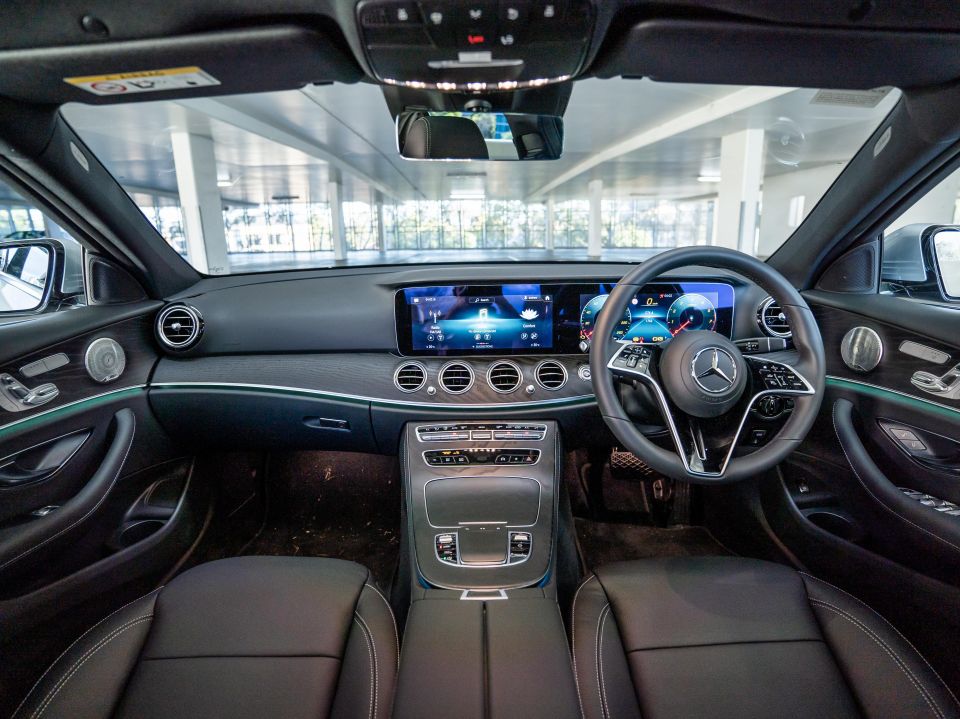
Unlike the latest S-Class and the new-generation C-Class due before the end of 2021, the facelifted E-Class hasn’t seen a radical change to the interior layout.
The familiar dual 12.3-inch displays remain, running the MBUX connected infotainment system. Headline changes for 2021 include the new steering wheel with fiddly touch-capacitive controls.
It’s not as if much was wrong with the E-Class’ cabin to begin with. High-quality materials, high-resolution displays, comfortable fully-electric adjustable front seating make for a luxurious-feeling cabin.
Our test vehicle’s black-on-black colour scheme (including the open-pore wood) was a bit bland and airport taxi-chic, but the overall look and feel is top notch.
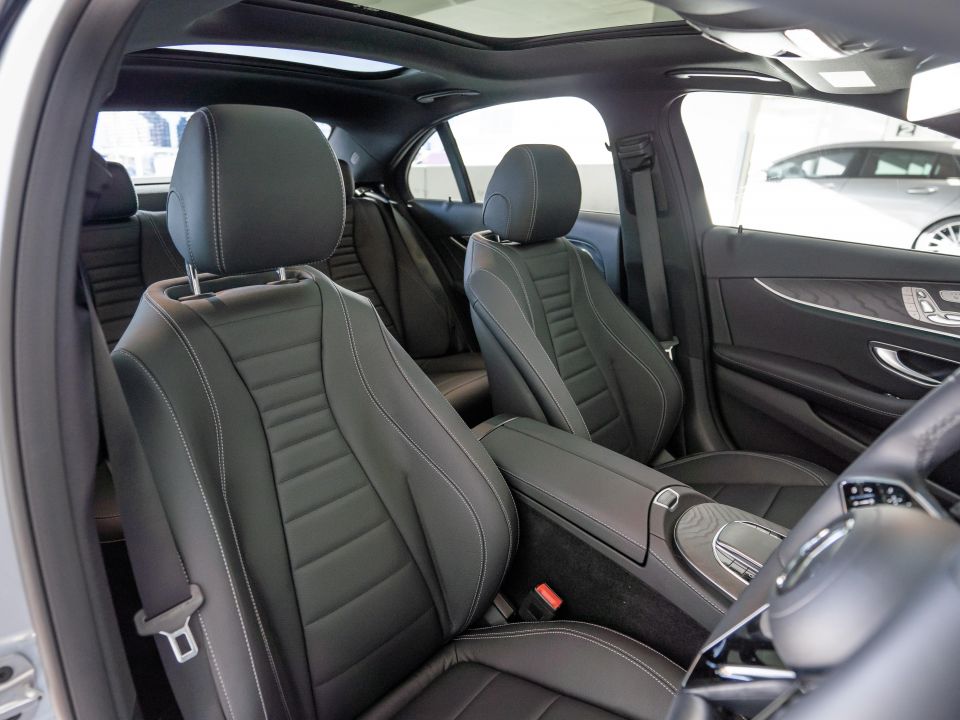

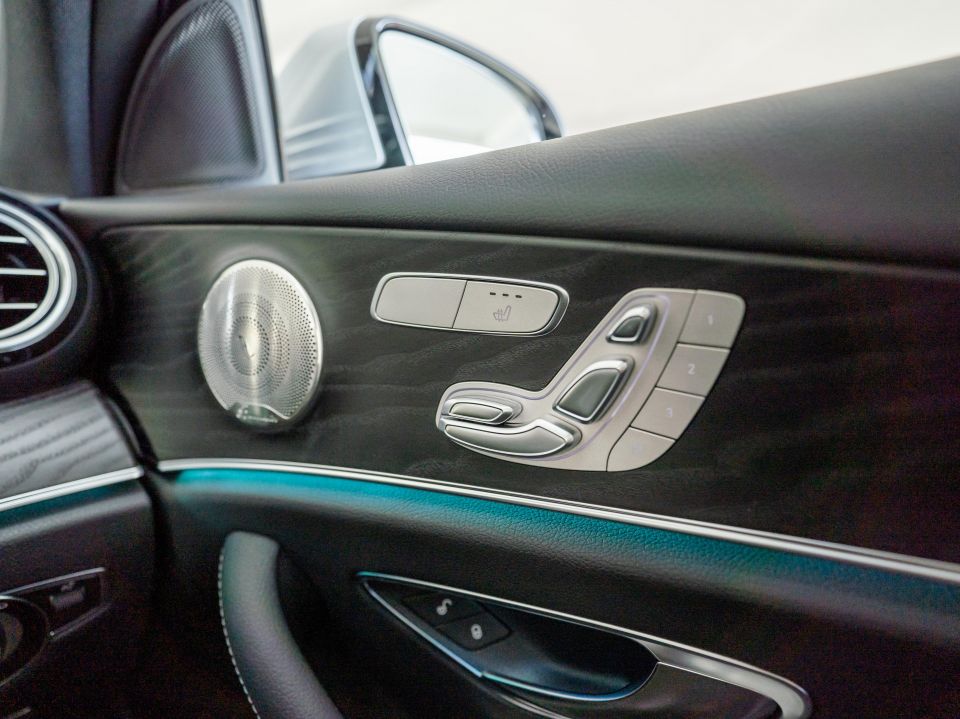
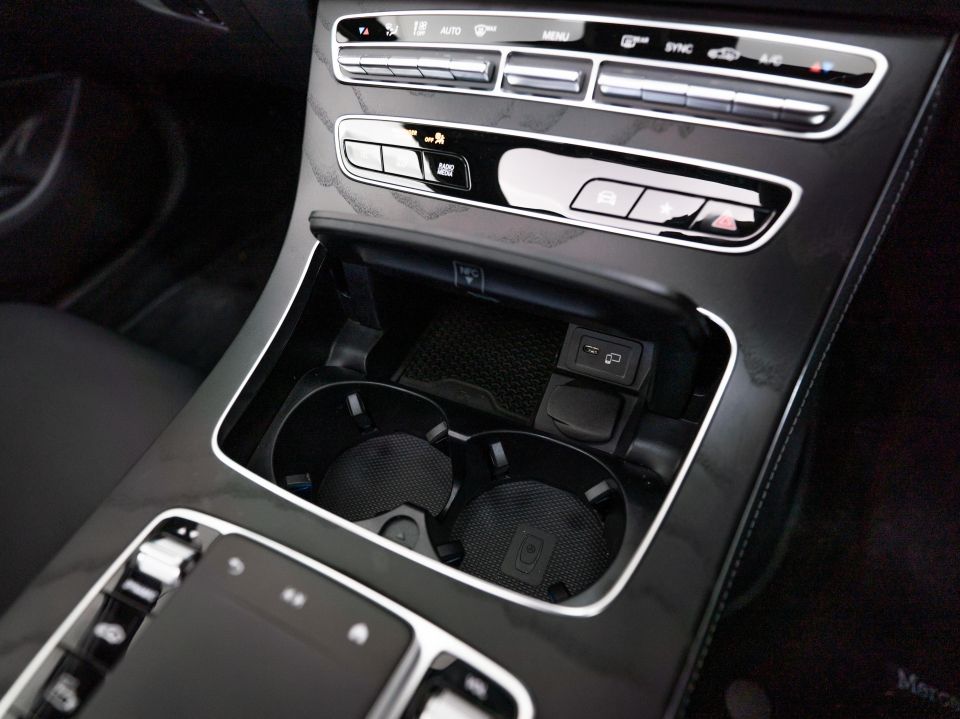
Comfort up front is great thanks to the aforementioned electric adjustment of the front seats including lumbar, standard heating, and wide range of reach and rake adjustment in the steering column. The driving position can be set nice and low, or a bit higher for better outward visibility.
Storage is decent if not exemplary, with a deep cubby under the centre armrest and big door bins with bottle holders, and a phone holder under a trap door under the centre stack which doubles as a wireless charger.
The issue with the latter is the lack of wireless smartphone mirroring means larger phones won’t fit in the holder with a cable connected, and obstruct the cupholders.
MBUX is well-regarded for its aesthetic and wide range of functions, as well as its intelligent voice assistant activated by saying “Hey Mercedes”. However, the touchpad controller and oddly-shaped steering wheel capacitive controls make navigating the menus a little tricky, meaning touch inputs are usually the most accurate.
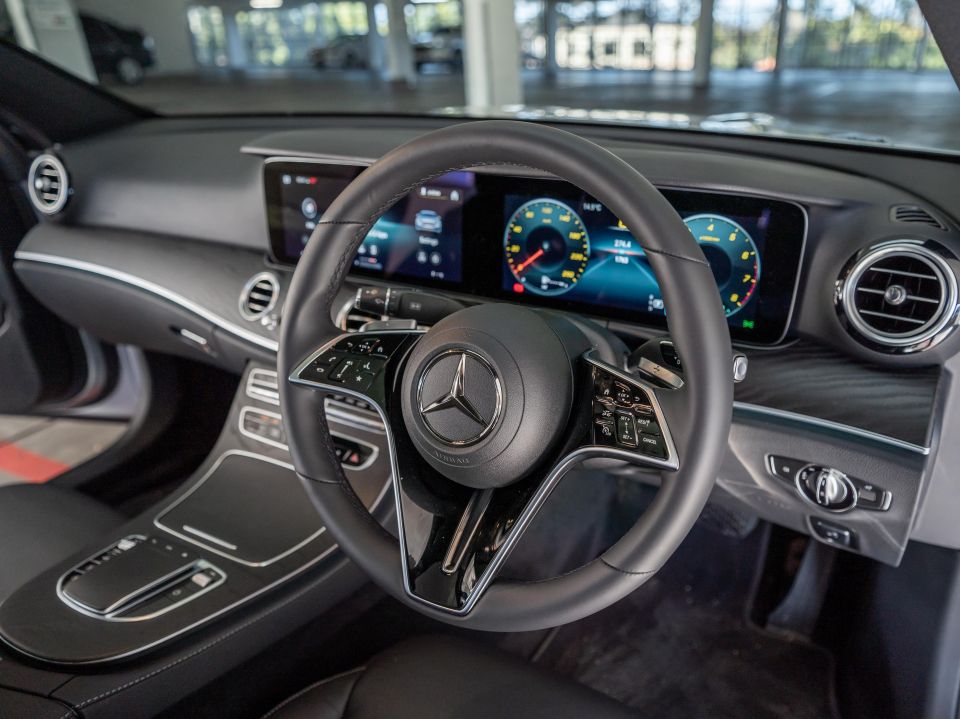
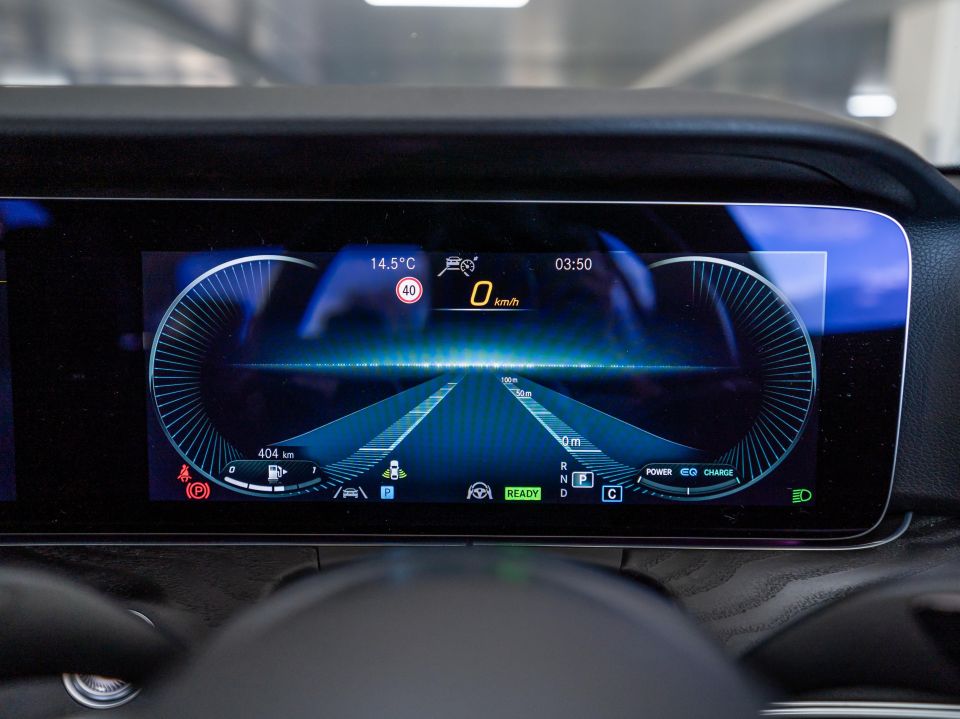
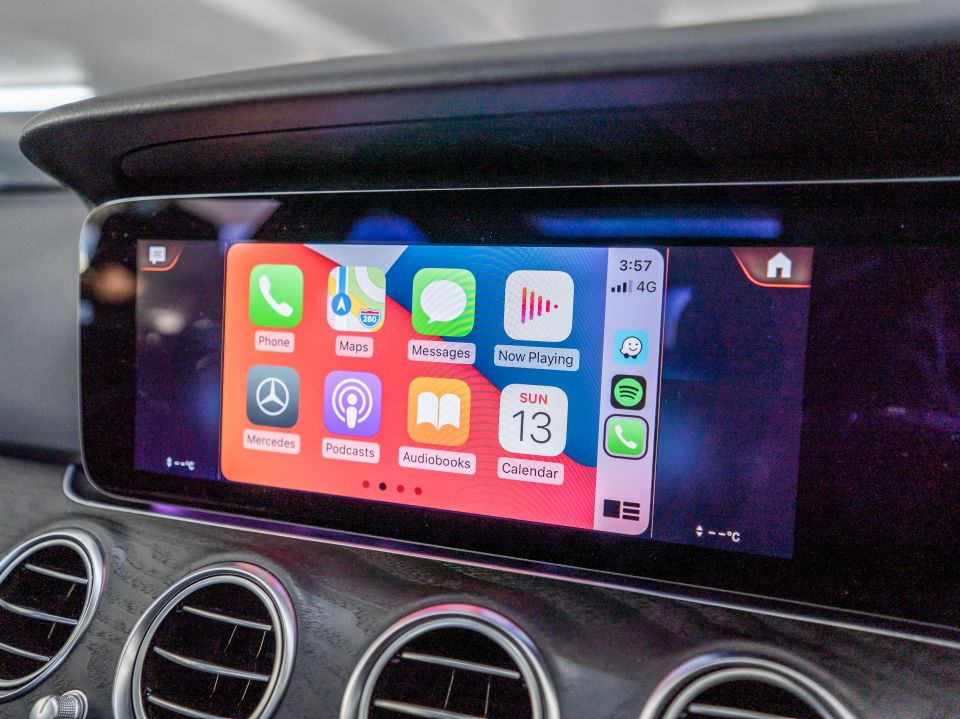
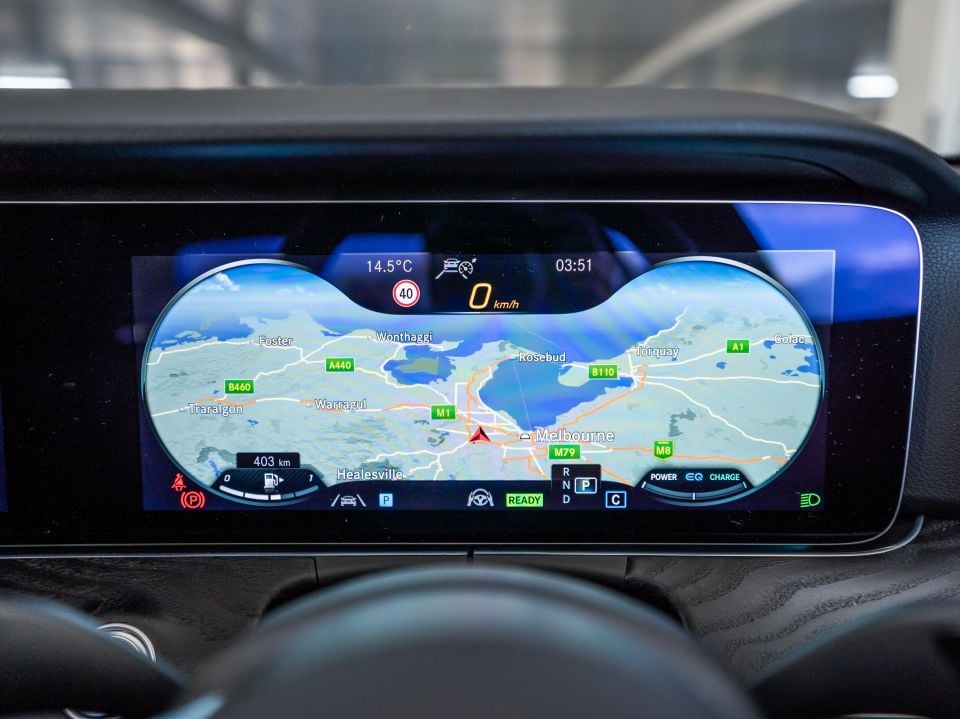
Further, some of the sub-menus for vehicle settings can be convoluted and Apple CarPlay doesn’t take up all 12.3 inches of real estate. Fairly minor flaws, but Audi’s latest MMI as well as BMW’s OS7.0 interfaces are more user-friendly.
The optional 13-speaker Burmester audio system featuring as part of the Vision Package offers crisp, deep sound, too.
Cool features like multi-colour ambient lighting with themes and modes means you can have a different combination for every journey, and the driver’s display has several display modes for your tacho/speedo dials as well as trip computer and vehicle functions. It’s very customisable.
Moving into the second row, I was surprised to find there wasn’t as much space as I would have expected. Being one of Germany’s favourite taxis I thought there’d be more head and legroom for my 6’1 frame – although it’s not tight per se.

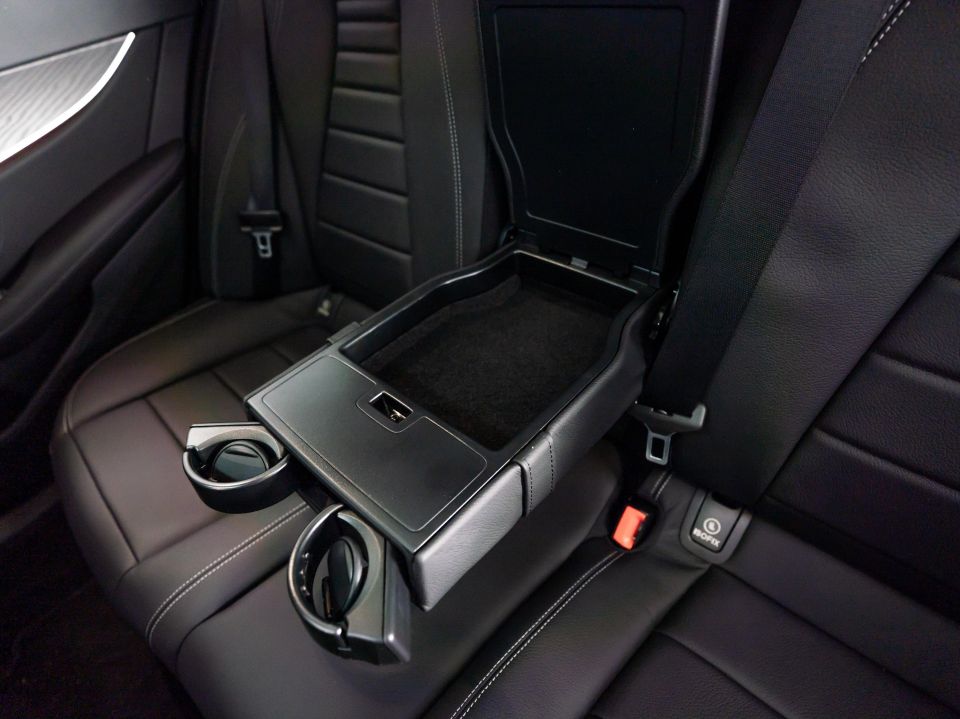

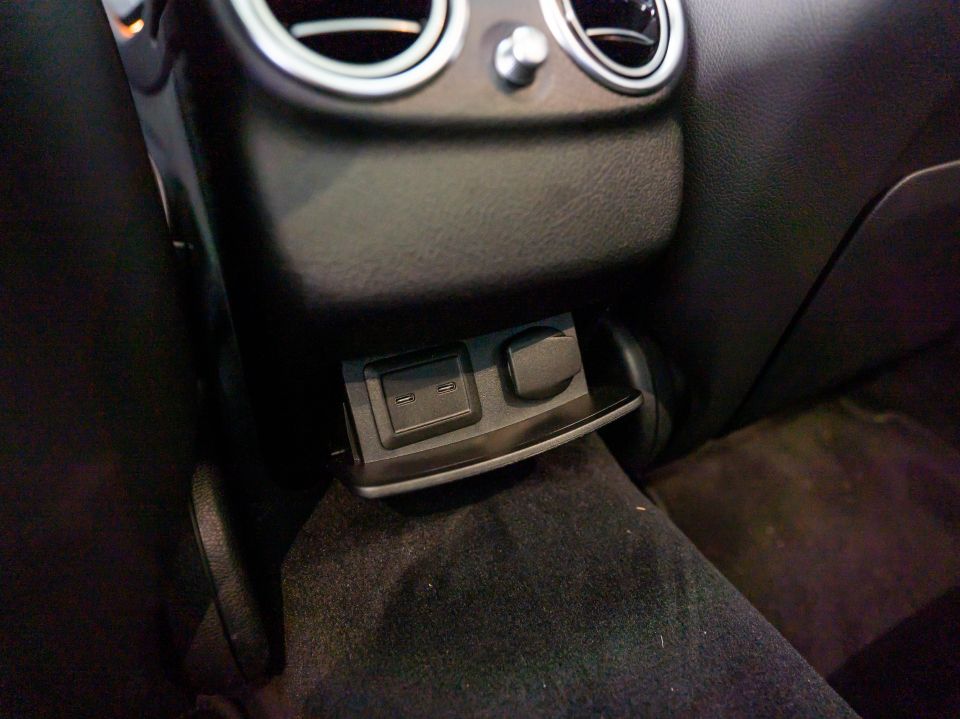
There’s also no standard rear climate controls, despite the E350 being a near-$130,000 luxury saloon. The skinny centre seat in the back also renders the E-Class more of a 4+1 seater rather than a fiver.
A drop-out draw below the rear air vents reveals USB-C and 12V power outlets, though, and there’s airline-style map pockets behind the front seats.
ISOFIX mounts on the outboard rear seats means little ones can travel along happily, and there’s also a fold-down centre armrests with cup holders and a small storage cubby. Bottles can be housed in the door bins, too.
Under the bootlid you’ll find a 540L load area, and since the E350 rides on run-flat tyres there’s no spare under the boot floor.
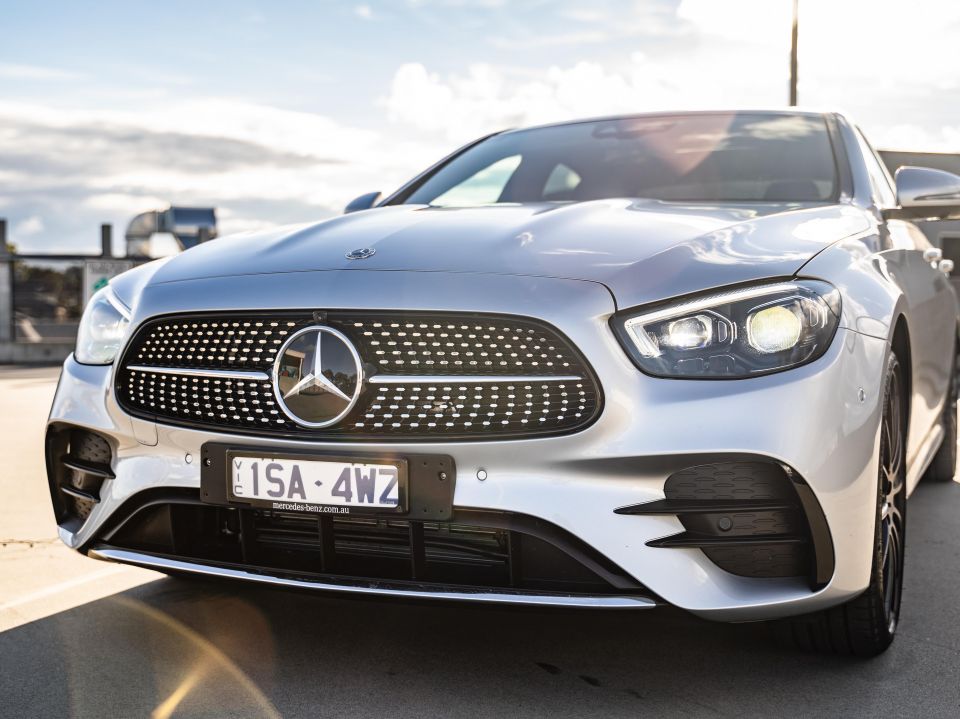
While history indicates the E350 badge should bring six-cylinder power, the latest iteration only has four. Power in the E350 comes from a 2.0-litre turbocharged four-cylinder petrol engine teamed with a 48V mild-hybrid system.
Outputs are rated at 220kW (6100rpm) and 400Nm (3000-4000rpm), while the ‘EQ Boost’ integrated electric motor can contribute 10kW and 150Nm for short bursts. Drive is sent to the rear wheels via a nine-speed automatic transmission.
Mercedes-Benz says the 48V system assists under acceleration to “deliver the response of a larger engine”, while also recuperating energy under brakes to supply power to the battery.
The idle stop/start feature has also been enhanced, as tends to be the case with MHEV systems, meaning the engine will shut off from about 20km/h as you come to a stop.
Fuel consumption for the E350 Sedan is officially quoted at 7.7L/100km, while Mercedes says the 0-100km/h sprint takes 5.9 seconds.
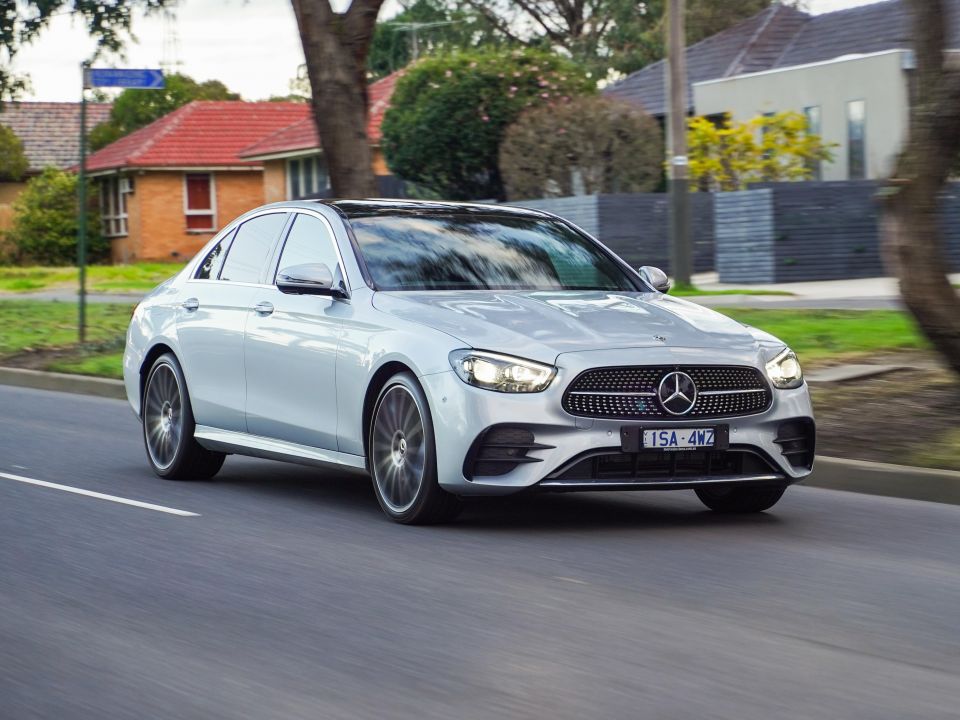
Historically, the E350 badge has adorned models with buttery smooth V6 engines under the bonnet, so I had high hopes for the high-tech EQ Boosted four-pot in this new model.
Press the start button and the mild-hybrid powertrain fires up with little drama, with a hushed idle barely entering the well-insulated cabin.
Mercedes-Benz tends to not simply add the 48V MHEV system’s outputs to the petrol engine’s figures as the tech is designed to eliminate turbo lag and mimic the more progressive and linear response of a larger engine – such as the V6 motors of previous generations.
In practice, there are elements of that but it’s not always consistent. The mild-hybrid system is sometimes clunky in slow-moving traffic or off the line, and the 3000rpm required for the petrol engine’s full 400Nm shove leaves quite a gap for the electrified components to fill.
The idle stop/start system will shut off the engine from about 15km/h as you come to a halt, though when you get going again it’s as if the engine doesn’t start straight away, which exacerbates the laggy feel.
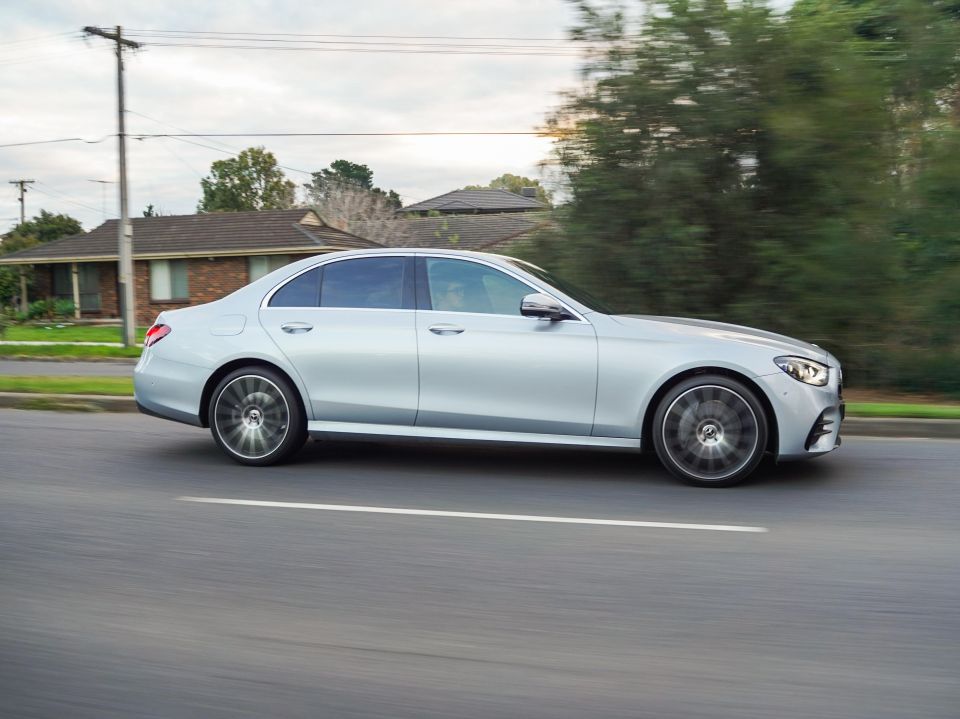
Where expert car reviews meet expert car buying – CarExpert gives you trusted advice, personalised service and real savings on your next new car.
The 2.0-litre’s engine note is likewise a little off the mark. It has a somewhat coarse and gravelly tone that isn’t necessarily unattractive, but it’s not as pleasing to the ears as a V6 or inline-six.
The 3.0-litre turbocharged inline-six in the previous E400 and the current GLE400 is a much nicer motor in both performance and aural appeal.
It’s not short on performance, though. Crusiing along it’s relatively punchy, but plant your foot and the E-Class really hustles. The manufacturer’s claim of 5.9 seconds seems achievable by the seat of the pants.
Not bad when you consider the E350’s near 1.8-tonne kerb mass (1789kg). It’s a luxury limo that will keep up with most hot hatches.
This isn’t meant to be a weekend warrior, though. The E-Class is at its best effortlessly coasting along in town and in the city, wafting over pockmarked roads and tram tracks.
Here, it continues to shine and really live up to what many would expect of a Benz.
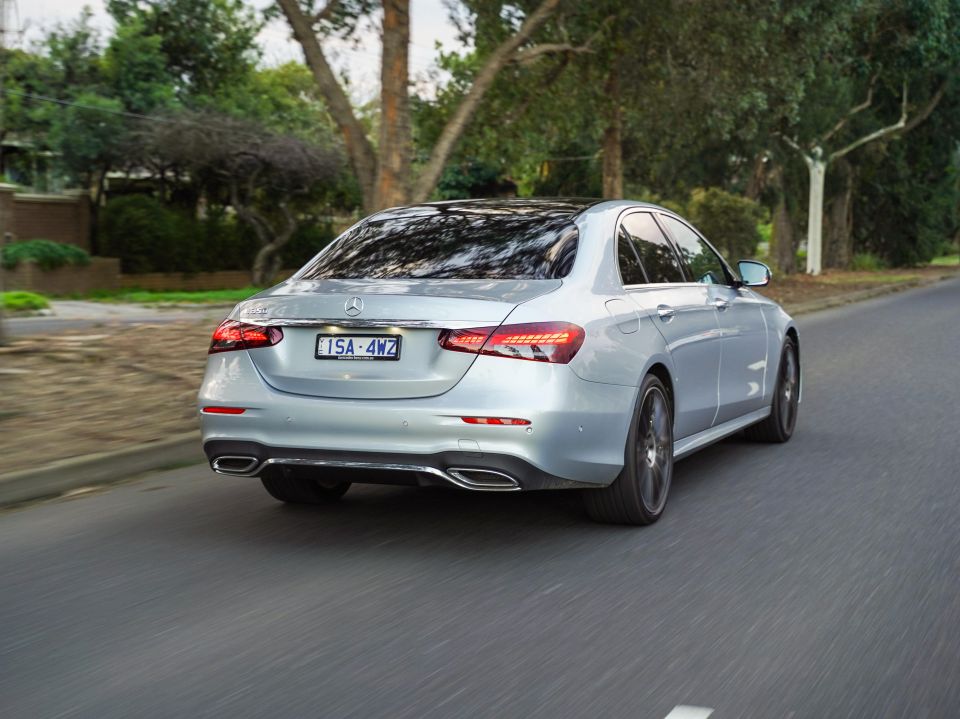
With standard air suspension, you’d easily forget the E350 is riding on big 20-inch wheels and low-profile rubber. It irons out the lumps and bumps of Melbourne’s inner-city roads with aplomb without sacrificing body control.
It’s super comfortable, very quiet in terms of road and wind noise, and the transmission shifts up at around 2000rpm in normal driving so you barely hear the engine either.
There’s a faint hint of tyre roar over coarse-chip surfaces but it’s still impressive when you consider the rolling stock. I’d be opting for 19-inch wheels and chubbier tyres if I was spending my own money, though.
From a handling perspective, the light controls mean the E is not the sharpest premium sedan on the market, but it’s very easy to pilot and corners confidently – albeit with numbed feedback through the driver controls.
The light steering is light but accurate, if a touch artificial. While it might not be the most engaging car to steer, parking and tight manoeuvres are a cinch.
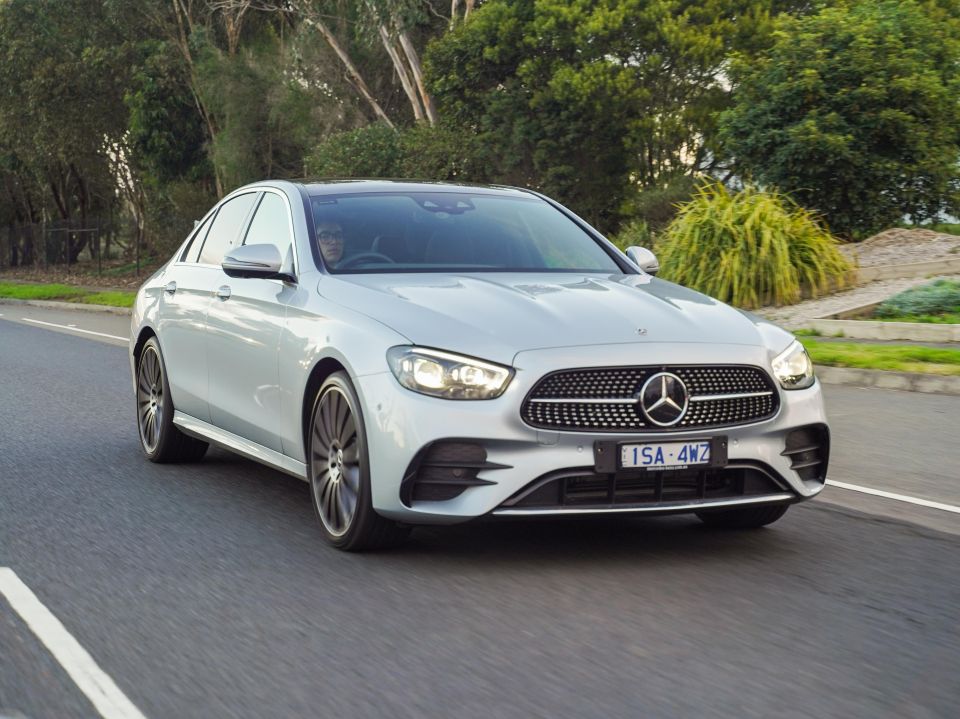
At speed the E-Class is planted and unbothered by anything the road ahead has to throw at it. The air-sprung sedan is so relaxed and sure-footed it makes 100-110km/h feel ‘slow’.
The array of assistance systems come in handy during everyday use, such as the Distronic adaptive cruise system with stop/go as well as the active lane-keep and lane centring systems which allow for semi-autonomous driving on the highway.
I particularly like Mercedes-Benz’s Lane Change Assist which gently steers you into the next lane when you indicate and there’s no vehicles in your blind-spot, and the blind-spot assist system itself was rarely intrusive.
The touch-capacitive steering wheel also recognises when your hands are on the wheel, rather than only registering steering inputs. It means that at a cruise it won’t constantly beep and chime at you to put your hands on the wheel even if they are resting on the tiller.
It can be a bit fiddly trying to toggle the cruise control and adjusting the set speed, though.
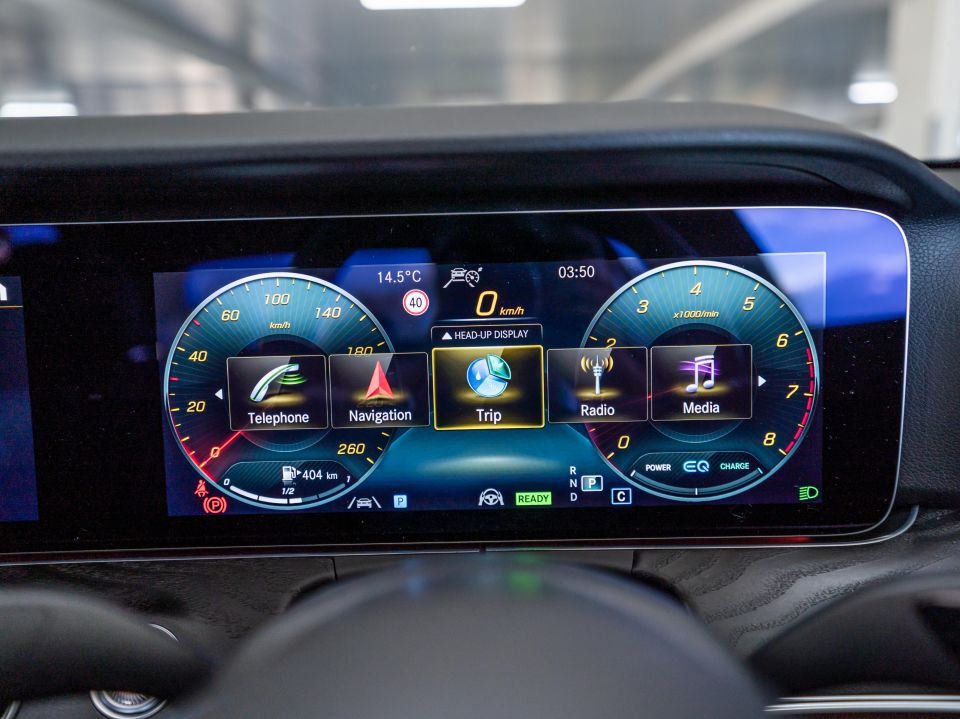
The E-Class is covered by Benz’s five-year, unlimited-kilometre warranty which is one of the leading programs in the premium segments.
Scheduled maintenance is required every 12 months or 25,000 kilometres – whichever comes first. The longer intervals come in handy if you cover a lot of miles annually.
Mercedes-Benz offers three-, four- and five-year service plans across its line-up, with the E350’s plans costing $2450, $3200 and $4800 respectively.
As for real-world fuel consumption, we saw an indicated 9.6L/100km over a week’s worth of commuting covering some 437km. Quite a bit up on the manufacturer’s combined claim of 7.7L/100km, but not wildly thirsty.
The E350 also demands 98 RON premium unleaded.

The E350 in some ways is hard to fault and in others too flawed.
All the fundamentals are there: the lovely cabin, wafty ride, high-end tech, and muscular performance. It feels like a true Benz in these regards.
However, at nearly $130,000 before on-road costs and options, the E350’s appeal pales against rival models with bigger, more powerful engines and/or sharper entry prices with more equipment.
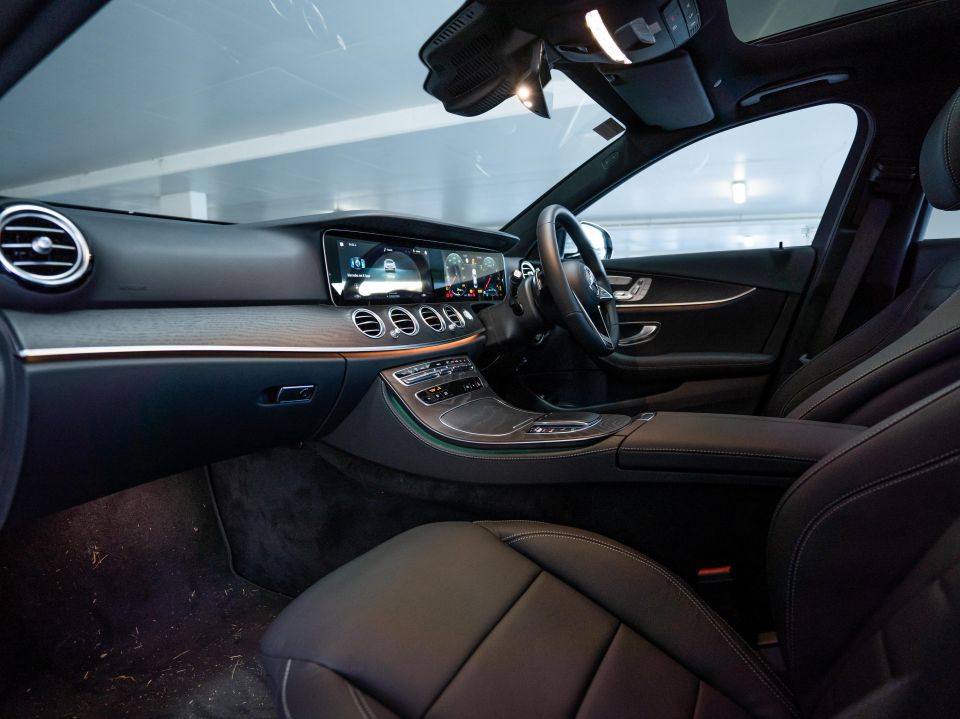
Even within its own line-up, the E300 e plug-in hybrid offers more grunt (235kW/700Nm) with better fuel economy (2.2L/100km), while also being nearly $4000 cheaper and packing the ability to do most urban commuting with zero local emissions (50km+).
As with most higher-end luxury cars, however, the typical buyer is a brand loyal that is already sold on an E-Class but is more stuck on which variant to choose. My recommendation? Get the E300 e or save $10,000 and grab the E300.
It’s a shame the local arm no longer sells the E400 with its inline-six. These bigger luxury models are best served with at least six cylinders.
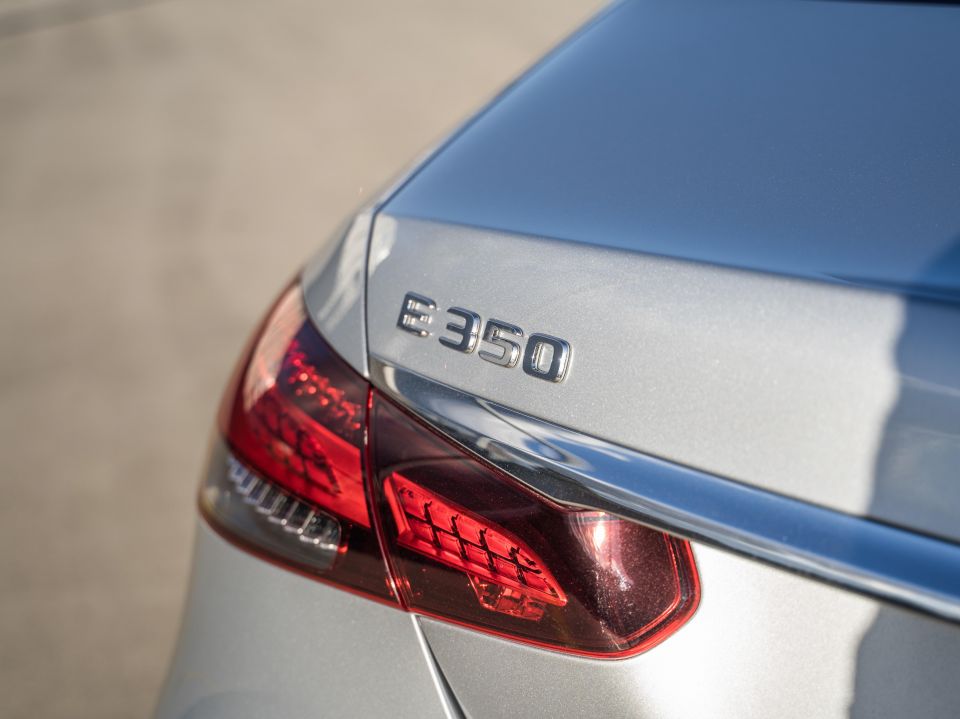
Click on the images for the full gallery by Wesley Loh (@garagetribe on Instagram)
MORE: Mercedes-Benz E-Class news, reviews, comparisons and videos
Where expert car reviews meet expert car buying – CarExpert gives you trusted advice, personalised service and real savings on your next new car.
James is an automotive journalist based in Melbourne, Australia. Before joining CarExpert.com.au in 2020, James has worked at leading auto media outlets including Carsales and CarAdvice, as well as at Pulse agency for Ford Australia's communications team. In 2019 James made Mumbrella's 'Top 20 most prolific web authors in Australia' list after publishing 1,360 articles between March 1, 2018 and February 28, 2019 for CarAdvice. James is also an Ambassador for Drive Against Depression – an Australian charity whose mission is to support mental wellness through the freedom of driving and a shared love of cars.


Andrew Maclean
3 Months Ago
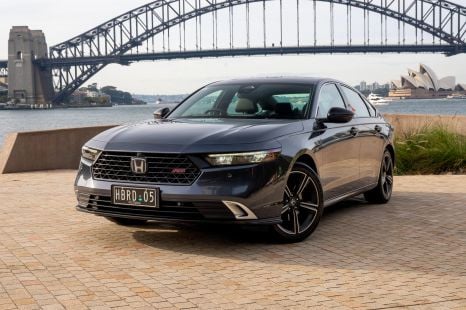

Andrew Maclean
2 Months Ago
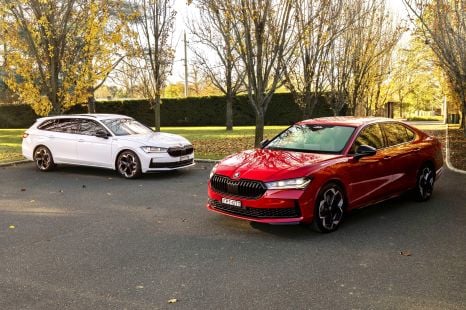

Max Davies
2 Months Ago
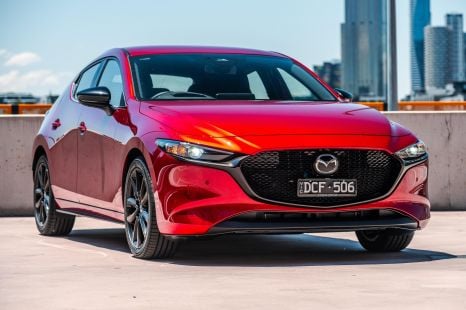

Josh Nevett
2 Months Ago


Josh Nevett
1 Month Ago


James Wong
1 Month Ago